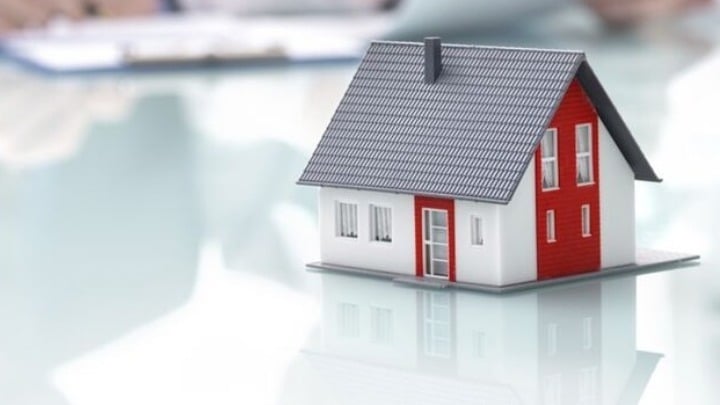
HOW CLIMATE CHANGE AFFECTS HOUSING AND THE PROPERTY BUY
The rise of sea levels, the collapse of biodiversity, extreme weather events, are signs of a “climate apocalypse” but they are not the only ones. The climate crisis affects real estate values and overall what we call housing.
As mentioned in a report by Eris Driva on economix.gr, research published in the USA showed that mortgage approvals tend to drop sharply in periods when temperatures are high. For every 1 degree Celsius above seasonally normal levels, approvals fell by about 1% and value by over 6.5%. Lower demand was only part of the problem. Mainly, the phenomenon involved lenders and their concerns about climate change and what it means for the properties they were lending on. Simply put, climate change was reducing the value of real estate before their eyes, as characteristically stated in a wired.com article.
Real estate is the world’s largest “treasury,” with a total value of $380 trillion, roughly four times global GDP. However, there is a new type of toxic asset emerging in real estate portfolios. It is about the increasing number of houses that are in “high risk” areas and their value can follow the same course as that of a coastline, erosion. Lenders are becoming noticeably more reluctant to approve loans for these types of assets. In the Asia-Pacific region, nearly 1 in 10 properties owned by property investment firms could be at “high risk” of climate change-related damage, particularly those located on coasts, according to a report by the consultancy firm climate risks XDI published in May.
“Some communities are going to become much more expensive to maintain,” says Dave Burt, founder and CEO of DeltaTerra Capital. Some banks are even starting to highlight climate risk to borrowers. HSBC’s UK website, for example, reports on how climate change could affect mortgages. But Burt argues that buyers aren’t always informed about the medium- and long-term risks, nor do they necessarily consider the amount they’re borrowing in terms of how their home value could plummet in the coming years.
And yet, many people are still buying beachfront property, for example in the US, and paying increasingly large sums to acquire it. Banks may be waking up to the financial risks, but it’s worth acknowledging that climate scientists have been sounding the alarm for years. More than a decade ago, Laura Moore, a professor of coastal geomorphology at the University of North Carolina at Chapel Hill, expressed concern about the dangers of real estate being built on the Outer Banks. Now, some of those homes are collapsing as storms rapidly shift the islands. “It is already more difficult to insure houses in coastal areas,” he says, adding: “this will become more and more the case in the future.”
In areas where shielding a home could reduce exposure to climate risks, banks appear “slow” to adopt products that might help people pay for solutions such as structural improvements, flood and fire protection, according to Burt. However, there are signs that the financial sector is gradually moving in the direction of helping landlords cope with climate change in other ways.
Lenders, for example, have come to understand that a property’s energy performance has an impact on its value as an asset as low bills improve their ability to meet loan repayments. In the UK, most houses have a rating that identifies the property’s performance — A is the highest, G the lowest. The rating takes into account parameters such as insulation, energy efficient lighting and the type of heating system installed. “Banks would like to have A-rated properties,” says Stewart Cummins, partner at PwC. Research by the Bank of England showed that those who owned energy efficient properties were more likely to be consistent with their mortgage payments. But lenders also benefit from a greener portfolio.
For a homeowner, too, better insulation or more efficient heating technology may seem like a good investment because banks may more easily approve a loan in the future. This trend has already begun and is being recorded with the rise of “green mortgages” or “energy efficient mortgages”. In some cases, such products offer better interest rates or cashback bonuses to buyers of properties with good energy ratings.
Luca Bertalot, secretary general of the European Mortgage Federation—European Covered Bond Council, says there are huge risks to economic productivity if people cannot secure homes that protect them from the worst effects of climate change. In heat waves, he notes, worker productivity falls, which means a negative impact on GDP. Conversely, if people make their homes cheaper to cool or heat, they might save money, which they can spend on other things like educating their children, which in turn improves their chances of a comfortable life in future.
But perhaps there is still a difficulty in recognizing the coming storm. Energy efficiency does little to protect against the most severe impacts of climate change such as stronger storms, rising seas, wildfires and floods. As governments fail to cover the costs of these disasters, lenders and insurance companies are likely to end up exposed to the risks. The US National Flood Insurance Program, for example, is already buckling under the weight of mounting debt. “As losses pile up, markets could well become more efficient and the incentives (including for asset shielding) stronger — because nobody’s going to bail you out anymore,” says Ralf Toumi of Imperial College London. consultant to insurance companies.
Ultimately, the effects of climate change on housing will force some people to move elsewhere, Burt estimates. To ease the burden on people most at risk of losing their homes due to climate change, financial loans may one day go to consumers in those areas to help them move to safer places, Burt says. Lenders who don’t take this approach and continue to offer mortgages on homes destined to succumb to climate change may soon regret it, he warns.
